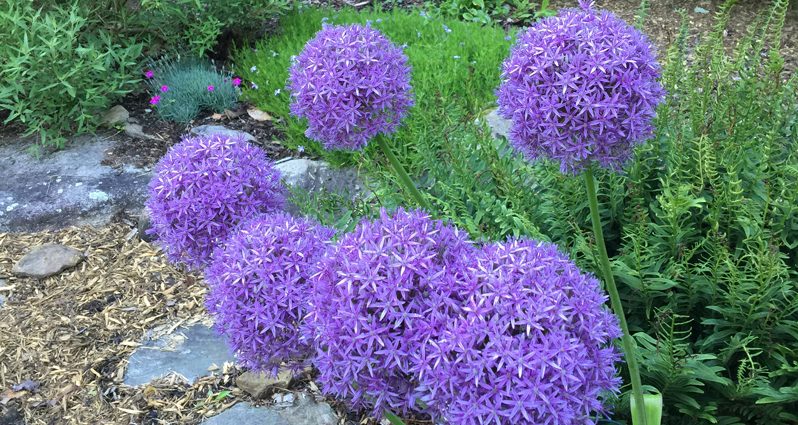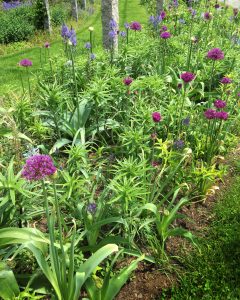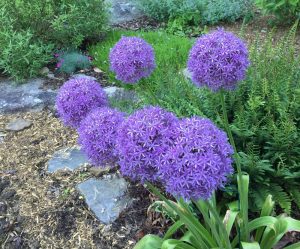designed for the way women work.

Allium: A Gardener’s Best Friend
Category: Plant Ideas & Info, Presenting "The Curious Gardener"
I have heard many a seasoned plant person say that if they had to choose only one plant to grow in their garden it would be Allium.
Why do gardeners love this genus of plants? Because Allium has hundreds of species ranging in shape and size, blooming from early spring to late fall, and deer don’t like any of them! In addition, while they are hardy with strong stems they are well mannered and don’t try to push out other plants in the garden. When I visited Martha Stewart’s home in Katonah, NY I couldn’t help but notice that ornamental allium figured importantly in her garden.

The common name for Allium is ‘onion.’ Maybe that explains why it is sometimes underappreciated by gardeners. The family of plants includes both edible (garlic, chives, onions, shallots and leeks) and purely ornamental varieties. Some, such as garlic chives, are both edible and ornamental.
Allium grows from a bulb, but some are planted just like any perennial. Several of the more ornamental ones, such as Allium giganteum, are planted in the fall the way other spring blooming bulbs are. Chives, on the other hand, are made up of many tiny bulbs and are planted in clumps, in season, like other clump forming perennials. Plant them in well drained soil and keep them watered throughout the season.

In Ruth Rogers Clausen’s invaluable book “50 Beautiful Deer-Resistant Plants” she notes that some of the spring and summer blooming ornamental varieties of Allium, such as Allium christophii, A. sphaerocephalon and A. giganteum, have unattractive, browning foliage. She suggests you plant other deer resistant plants such as lady’s mantle at their feet to camouflage ugly ‘ankles.’
While the flowers of many ornamental onions are mauve or white, lily leek (A. moly) has 2-in wide umbels of yellow gold flowers on 10-12” stems, which bloom in late spring or early summer. Ruth features it in her book.
Allium are beautiful as cut flowers but they often have an oniony smell. Change the water in your vase daily or use a floral preservative to suppress the odor. Lily leek has a cultivar called ‘Jeannine’ that Ruth Clausen recommends as a cut flower because it doesn’t have that oniony smell. Bees and butterflies, by the way, love the fragrance of allium.
Most ornamental Allium species that have been cultivated for our gardens are native to Europe and Asia. Nodding onion (Allium cernuum), though, is native to North America and the bulbs were used by Native Americans medicinally to treat croup, colic, colds and fevers. Allium tricoccum is native to Canada and the eastern US and is commonly known as ramps and wild leeks.
I’m guilty of not giving allium the attention it deserves in my garden and wish I had made more room for it. Ruth mentions that one of her all time favorites is the low growing A. karataviense, as well as the towering ‘Mt Everest’.
There’s always next year!



Please mention the sun requirements of the plants you recommend! Thanks.
Not just deer-proof, alliums are avoided by squirrels and other garden pests. I love them all, but I think garlic chives is my favorite because they bloom in late summer in dry semi-shade, a time and place where little else is blooming.